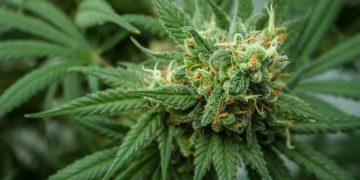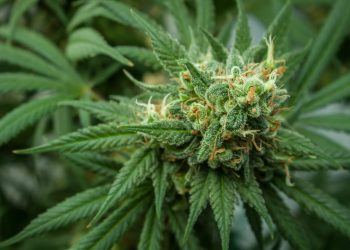[ad_1]
The Science of Green: Maximizing Cannabis Growth with Advanced Nutrient Management Techniques
When it comes to cultivating cannabis, nutrient management is crucial for maximizing growth and achieving optimal yields. By understanding the science behind nutrient uptake and implementing advanced techniques, growers can ensure their plants receive the essential elements they need to thrive.
The Importance of Nutrients in Cannabis Growth
Cannabis plants require a variety of essential nutrients to support their growth and development. These nutrients can be divided into two categories: macronutrients and micronutrients. Macronutrients, such as nitrogen, phosphorus, and potassium, are needed in larger quantities, while micronutrients, including iron, copper, and zinc, are required in smaller amounts.
Each nutrient plays a specific role in the plant’s physiological processes, such as photosynthesis, respiration, and flowering. Without a balanced nutrient profile, cannabis plants may exhibit deficiencies or excesses that can negatively impact their overall health and productivity.
Advanced Nutrient Management Techniques
For growers looking to maximize cannabis growth, advanced nutrient management techniques can help ensure plants receive the right nutrients at the right times. Here are some key strategies to consider:
1. Nutrient Monitoring
One of the most important aspects of nutrient management is monitoring the nutrient levels in the growing medium. This can be done through regular soil or water testing to determine the nutrient content and pH levels. By monitoring nutrient levels, growers can make adjustments to their feeding regimen to ensure plants are receiving the proper balance of nutrients.
2. Customized Feeding Programs
Developing a customized feeding program based on the specific needs of cannabis plants can help optimize growth and yields. This involves selecting the right combination of nutrient products and adjusting the feeding schedule based on the plant’s stage of growth.
3. Foliar Feeding
In addition to traditional root feeding, foliar feeding can be a valuable technique for providing nutrients directly to the plant’s leaves. This method allows for faster nutrient uptake and can be particularly beneficial during periods of rapid growth or stress.
Common Nutrient Deficiencies in Cannabis Plants
Despite growers’ best efforts, cannabis plants can still experience nutrient deficiencies due to a variety of factors, such as pH imbalances, nutrient lockout, or inadequate feeding. Some common nutrient deficiencies in cannabis plants include:
1. Nitrogen Deficiency
Nitrogen is essential for plant growth and is responsible for leaf development and overall vigor. A nitrogen deficiency can result in yellowing leaves, stunted growth, and decreased yields.
2. Phosphorus Deficiency
Phosphorus plays a key role in energy transfer and photosynthesis. A phosphorus deficiency can cause dark green or purple leaves, slow growth, and poor flowering.
3. Potassium Deficiency
Potassium is necessary for protein synthesis, water uptake, and nutrient transport within the plant. A potassium deficiency can lead to weak stems, leaf curling, and reduced yields.
Optimizing Cannabis Growth with Nutrient Management
To maximize cannabis growth and yields, it’s essential to implement advanced nutrient management techniques and address any nutrient deficiencies promptly. By monitoring nutrient levels, customizing feeding programs, and utilizing foliar feeding, growers can ensure their plants receive the essential nutrients they need to thrive.
By understanding the science of nutrient uptake and implementing these advanced techniques, growers can cultivate healthy, robust cannabis plants that produce high-quality yields. Whether you’re a novice grower or experienced cultivator, optimizing nutrient management is key to achieving success in cannabis cultivation.
[ad_2]































































